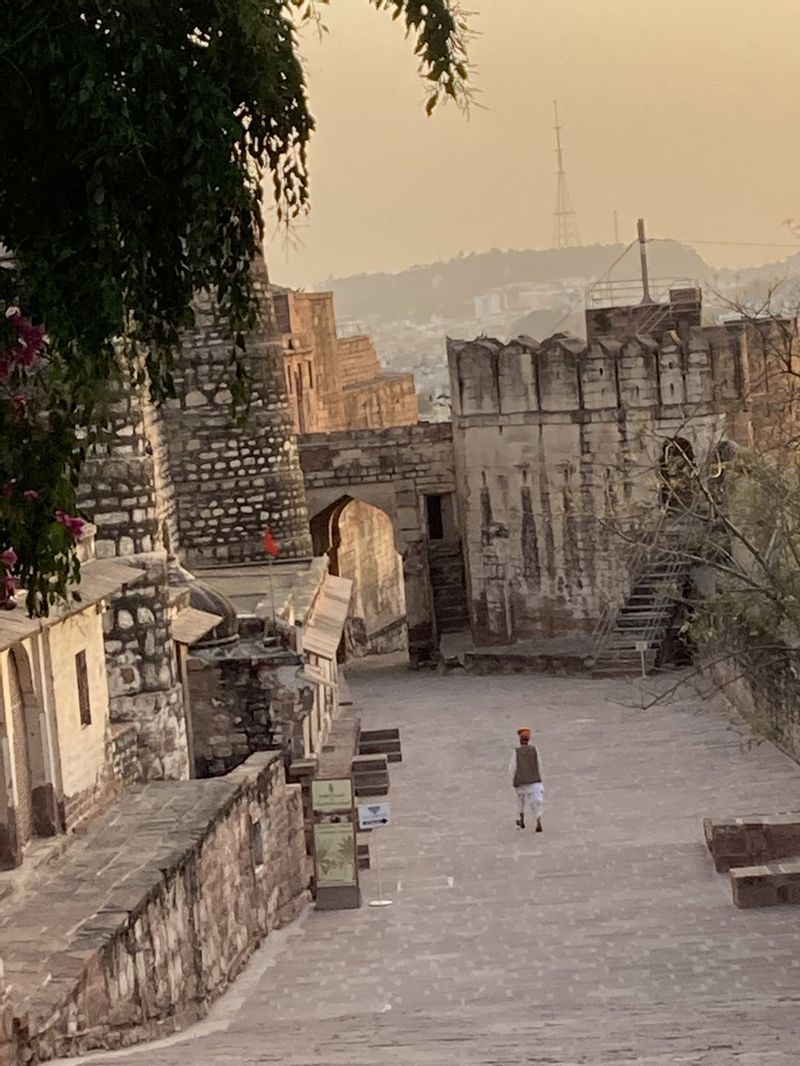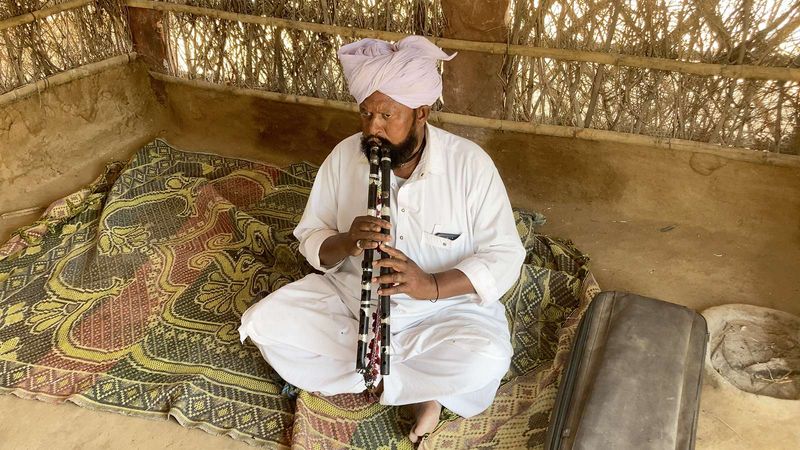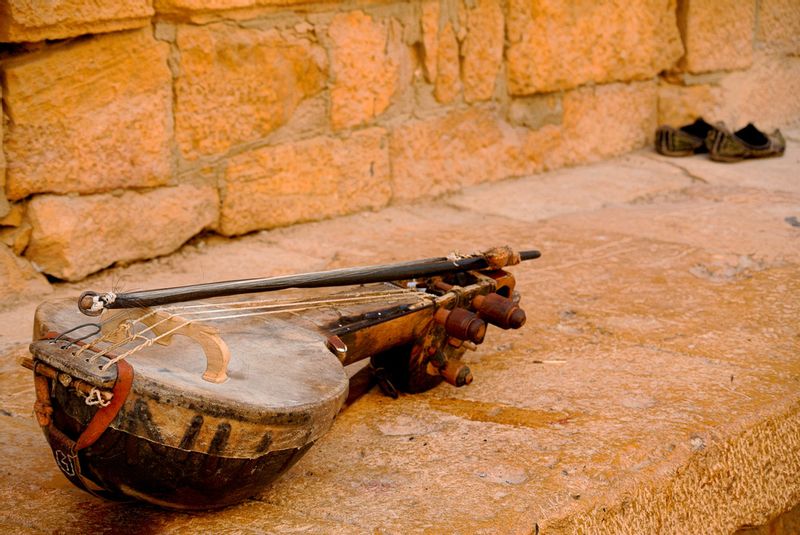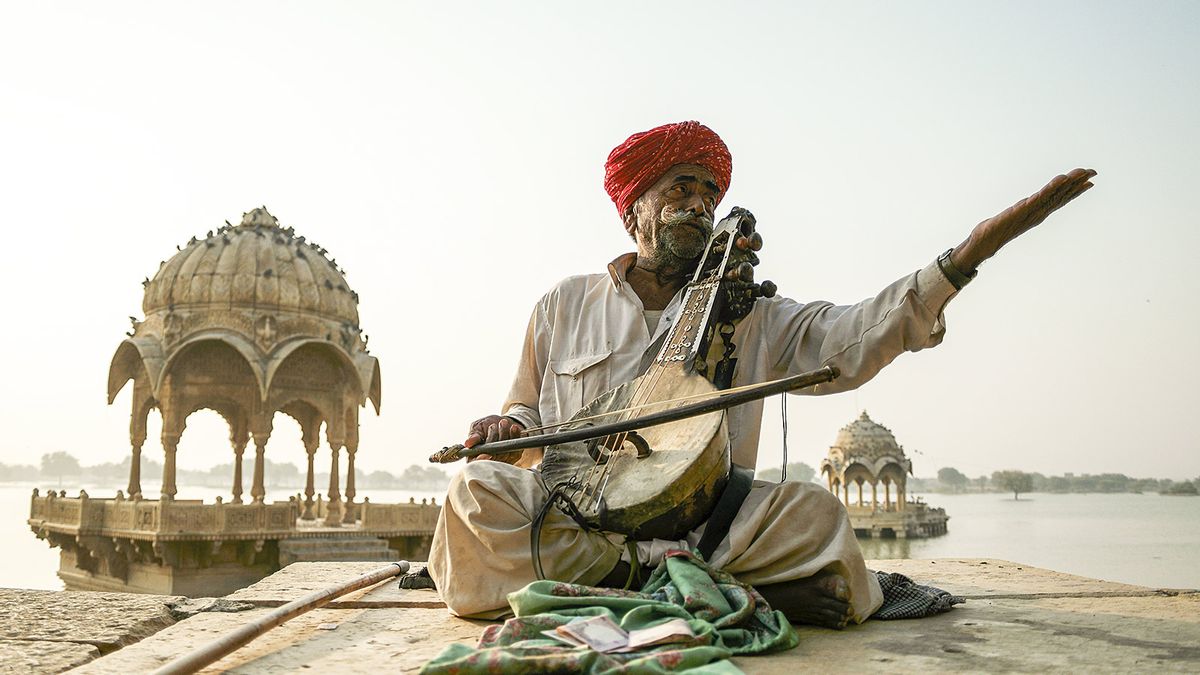In an essay I read recently, British-born travel writer, Pico Iyer, said, “Everyone has a secret home – a place that feels familiar for no reason at all – and some of us are lucky enough to find it in real life.” He added that “in times of stress –we tend to return to such places in our heads to sustain ourselves.” I’ve believed my ‘secret home’ to be in Rajasthan for a while now and during the pandemic, while being locked indoors, I found myself longing to go back there even more. Apart from the palaces, forts, havelis and sand dunes, I find myself most drawn to Rajasthan’s artists - musicians, dancers, storytellers and master craftsmen.
Returning to the desert

A few years ago while attending the World Sacred Spirit Festival, held at the Mehrangarh Fort in Jodhpur, I met Santoor player, Nawab Khan. During the pandemic, when most folk artists from Rajasthan who perform at live events, found themselves out of work, I chanced upon Nawab Khan’s initiative that gave these artists the opportunity to perform live on social media platforms. I sat glued to videos where the high-pitched, powerful voices of the turbaned singers pierced through a rugged yet gorgeous terrain. This prompted me to make my way back to Rajasthan, to understand the evolution of their art, the story of their survival and the almost magical way in which they pass on their knowledge to the generations after them. My partner, Puneet, who is a sound engineer, was keen to record with the artistes and I wanted to document their work and oral traditions. So, amidst the anxiety of flying after a year, with all the safety protocols we could follow, we set off.
Charmed by the Blue City
We planned this musical journey with Nawab Khan, who was gracious enough to introduce us to his fellow musicians. Our first stop was in Jodhpur, which I visited for the fourth time but was my partner's first, so we kept aside some time to wander in the streets of the old city and visit some of its iconic monuments. The Mehrangarh fort, standing 400 feet above the city and visible from most parts of the “Blue City’ or old town of Jodhpur, can’t be missed. After all, even Rudyard Kipling fell prey to the charm of this massive structure calling it “a palace that might have been built by titans and coloured by the morning sun”. The mirror work in the ornate Sheesh Mahal, the exquisite gold paintings of Phool Mahal, and the jharokhas of the Zenana are exquisite.

From the fort, we made our way to the Jodhpur home of Asha Sapera, a Kalbeliya performer. The Kalbeliyas are a gypsy tribe who were originally professional snake charmers. The ban on snake-charming under the Indian Wildlife Act of 1972 forced them to look for alternative livelihood options and many of them took to dancing and singing. The dance was originally meant to mimic the swaying movements of a snake, with performers usually dressed in a black costume to resemble snakeskin. The art form was classified as an “intangible cultural heritage” by UNESCO in 2010. The original instruments used along with the dance were the been, daph and manjira. With time, the dancers now perform with the dholak, khartal, harmonium and even collaborate with the Langa and Manganiyar singers.
Meeting the Kalbeliyas

Unlike the Langas and the Manganiyars, the Kalbeliyas feature women artists prominently. Standing on the terrace of her home, dressed in a simple salwar kameez, Asha Sapera has no airs about having travelled the world to showcase her art and received many accolades over the last few years. “I’ve been dancing from a young age and learnt watching my mother and my elder sister. My five-year-old daughter dances while watching me,” Asha tells us. “My first international performance was in 2007 in Hong Kong. I was only 15 and was very excited that I would sit in a plane. The response of the people was overwhelming. The fact that the international audience didn’t understand our language and yet appreciated our art, was heartwarming,” she says, the delight clearly showing on her face.
During the pandemic, despite not being tech-savvy originally, she started to teach the dance on Zoom classes. Our meeting with Asha showed us how she has adapted with the times, her craft giving her both social and economic independence, thriving instead of merely surviving and empowered her to be a single parent in an otherwise conservative society.
Documenting traditional sounds

On the second day, we made our way to the Arna Jharna Desert Museum, about 15 kilometres from Jodhpur city. The museum was conceptualised by Komal Kothari, the founder of Rupayan Sansthan and highly regarded in academic circles for his knowledge of the folklore, oral traditions and ethnomusicology of Rajasthan. Fondly called Komal Da by the musicians, he was largely responsible for organising the repertoire and mobilising the exposure of folk musicians to national and international audiences. “He spent 20 years studying the rituals, language and the traditions of the musician communities. He would walk from village to village and gather information about the artists, their craft, their repertoire, their lifestyle, traditions and rituals. Today Rupayan has over 20,000 hours of recorded archives,” says Kuldeep Kothari, Komal Da’s son, who currently runs the organisation and the museum.
The museum houses a number of ancient instruments used by the artist communities of this region, including the Ravanahatta, Gujratan Sarangi, Sindhi Sarangi, as well as some that are no longer used or produced, such as the Jantar, Jogia Sarangi and Nagfani. The premises also house a music school for training young underprivileged boys from the Langa community. When we heard them sing, it made us believe, just like they do, that their gift is inherited. While regular ’riyaz’ helps fine-tune their skills, their natural, raw talent would leave most people speechless.
To meet more Langa musicians, we went on to Badnawa, a village 100 kms away from Jodhpur, home to over 500 professional Langa musicians, who would traditionally perform for Sindhi Muslim patrons called the Sindhi Sipahis, who resided in villages near the border area. There are two sects in the Langa community - the SurnayaLangas who play aerophonic instruments like Murali and Surnai and the SarangiyaLangas whose traditional instrument is the Sindhi Sarangi. We met the singing children of the village and realised that most of them wanted to become professional musicians. When we were about to leave, two young singers told my partner that they have always wanted to sing in a studio. “We want to sing at the Coke Studio”, they said. He laughed and explained to them that actual studios worked differently and offered to show them one.
An introduction to the Manganiyars

From Badnawa, our next stop was the city of Jaisalmer, home to Satyajit Ray’s Shonar Kella - the Golden Fort, one of the few living forts in the world. One-fourth of the old city's population still resides within the fort. Another gem within the city is the Patwon Ki Haveli, the home of a wealthy brocade merchant who ordered the construction of separate stories for each of his 5 sons, built over a span of 50 years.
Apart from these impressive structures, we loved listening to temple bells and chants while watching the sunset over the Gadisar lake.
About half an hour away from the hustle-bustle of the old city, is Hamira village. The Manganiyar musicians we met in this village have performed at the White House and Madison Square Gardens in the US, and the Royal Albert Hall in the UK. We visited the home of Padma Shri awardee, Sakar Khan, whose sons Ghewar Khan, Feroze Khan and Darra Khan have followed his legacy and play the Khamaycha, a string instrument used predominantly by the Manganiyars in the Jaisalmer-Barmer region. This instrument is constructed out of a piece of mango wood with a round resonator covered in goat leather. “The string instruments are not very popular today. The harmonium which did not feature with our music traditionally, has become largely popular since it’s easier to play. You can’t dance to the tune of a Khamaicha as it’s a more soulful instrument,” Feroze Khan explains. “We live together, and teach our sons and nephews, who come and stay with us to learn, just like our father taught us. It’s almost like a gurukul,” says Ghewar Khan. While the Manganiyars are Muslim musicians, their patrons were Hindu, so they specialise in Bhajans and songs devoted to Hindu Gods.
We spent the evening listening to the different generations of the Sakar Khan family play the Khamaycha and sing, which was an indescribably blissful experience, ending our week-long musical journey on the right note, leaving us happy but not satiated. We’ve already planned our next trip, to immerse ourselves in the soulful music of the Merasis - or court musicians. Stay tuned.




